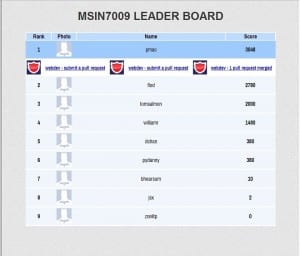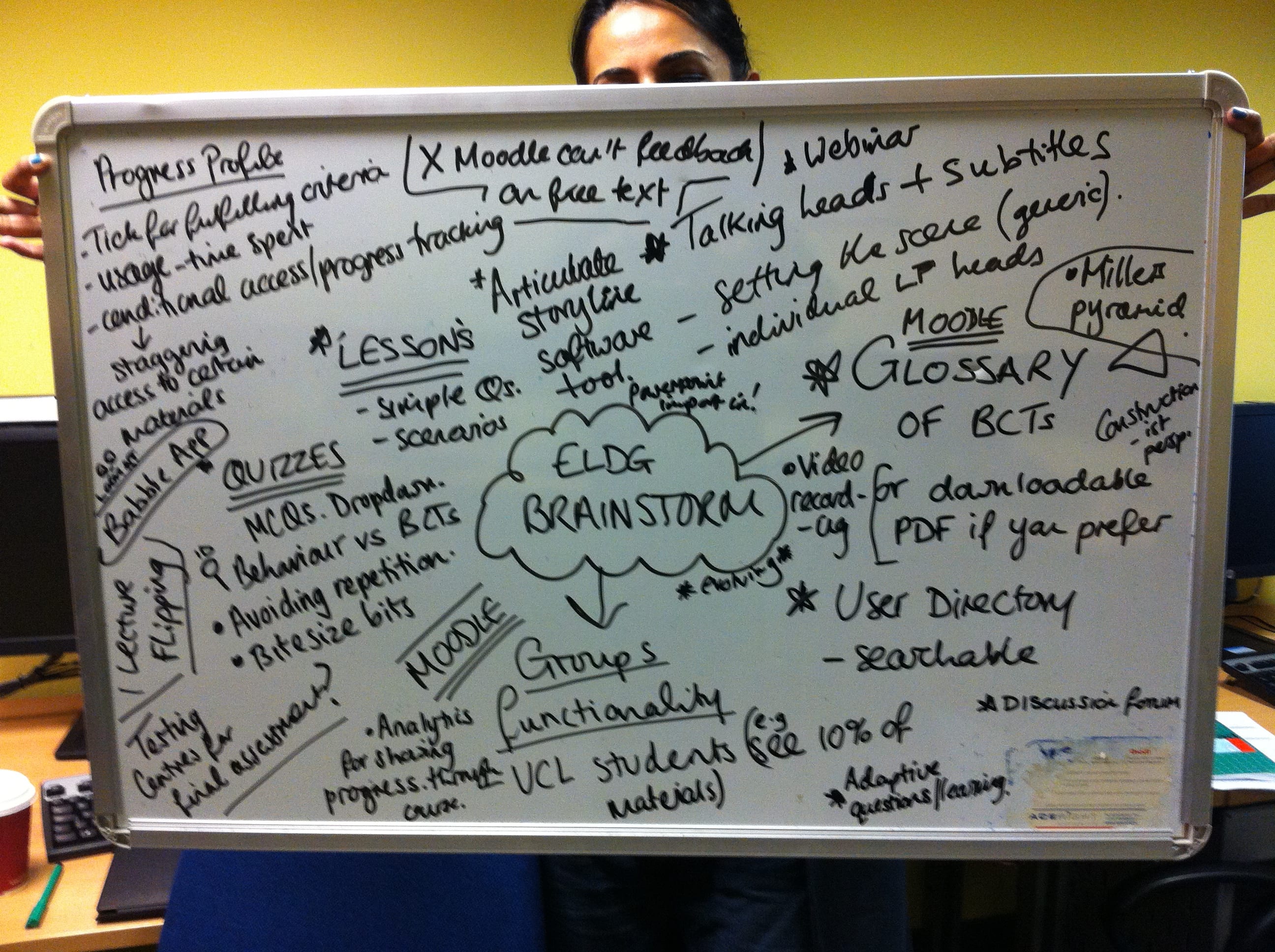What happens in a ‘Moodling’ session?
By Caroline E Wood, on 29 August 2013
Designing learning activities in Moodle
On Friday 16th August, my student (Harveen Kaur) and I (Caroline Wood) met with one of our ELDG mentors (Vicki Dale) and Moodle expert Mira Vogel, E-Learning Facilitator, for a Moodling session. Mira has developed a site in Moodle for UCL users called An Elf’s Lair, and this, alongside the Moodle Features Demo by Rod Digges and colleagues, provided a focus for discussions about what is technically possible in Moodle as well as what is pedagogically advisable.
We are using Moodle to design an interactive, online resource as part of undergraduate teaching about the Behavioural Change Technique taxonomy (BCT). Students will be asked to review some introductory material on the Moodle site before exploring core theoretical foundations in two lectures. After the lecture, they will be expected to explore BCTs in action and build their skills on the Moodle site.
Mira encouraged us to think about what students will see when they first log on. As well as the site being visually stimulating and engaging, students need to be informed about learning objectives and other introductory information about how the resource fits into their programme. That is quite a lot on one page already, so we discussed how we might alternatively store some of this information as a course handbook or a downloadable file and just have the link to it available on the home page.
We also discussed different options for displaying content (text or other media) in pages, books and lessons. Pages are useful for displaying short sections of information. Books are useful for displaying information in a linear page-turning way. Lessons facilitate a non-linear experience; they can be used in the traditional ‘programmed learning’ sense where students’ progression is limited by their ability to complete tasks or questions successfully, or to offer a ‘Choose your own adventure’ experience to allow students to explore the ramifications of their actions in relation to a case simulation.
We also explored the possibility of controlled release of material in Moodle, and decided that the interactive components should be made available on the day of the lectures so that students can immediately apply theory to practice. On the Moodle site, students will be guided through a relevant example of a behaviour change intervention – the development of effective study habits. Throughout each of the exercises, students will be encouraged to revisit elements of the BCT Taxonomy framework; this will be facilitated by use of the Glossary tool.
One of our key discussions was how we could use quizzes for the interactive components. Our complete training programme, on which the Moodle site will based , involves a lot of discussion and opportunities for trainees to ask experts to explain anything they do not understand. This can be difficult to simulate online due to the fact that there are often no ‘right’ or ‘wrong’ answers. Although students will be able to ask questions during the lecture, detailed feedback in the online quizzes is essential to further student understanding and clarify misunderstandings during independent learning. There are several ways in which we could do this. One solution might be to incorporate graphs of student responses from a previous face-to-face workshop, so that students can compare their own answers to those of a larger cohort.
Handy tips we picked up from our session included:
- Tip #1: The ‘Paste from Word’ icon strips out unnecessary formatting when copying content into Moodle from any of the MS Office applications.
- Tip #2: You can switch between teacher and student views of the course by going to the settings tab on the left hand side of the screen.
- Tip #3: We could have entries from our glossary appear on the right hand side of the main screen to highlight definitions for different BCTs in the taxonomy.
We will be experimenting with the different features in Moodle and mapping out our content over the next couple of weeks before starting to commit to particular activities. We would really welcome useful suggestions and other handy tips, so please feel free to comment on which features you have found most useful in Moodle!
We are tweeting! @UCLTaxonomy
 Close
Close








